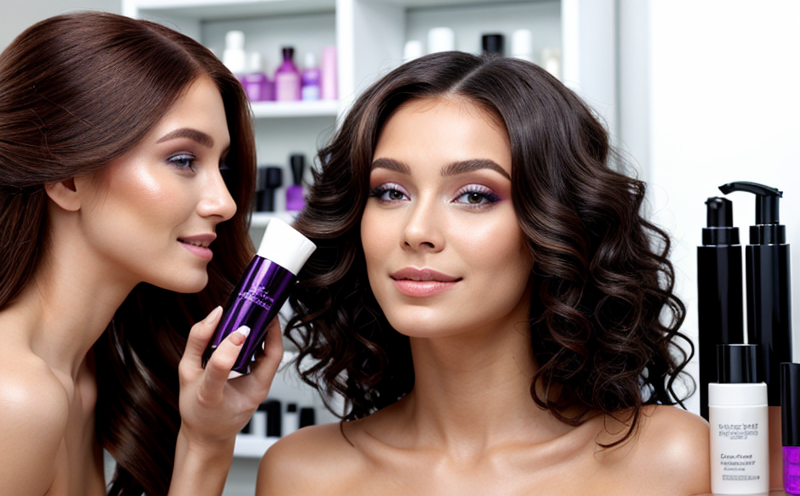In Vitro Hair Follicle Toxicity Testing
The in vitro hair follicle toxicity testing method is a sophisticated approach that provides critical information on the potential adverse effects of cosmetic products on the scalp and hair. This technique is particularly valuable for hair care products as it assesses whether the ingredients or formulations might induce irritation, inflammation, or other harmful responses in the skin and hair follicles. The test helps companies ensure product safety before they reach the market, thereby protecting consumers from potential risks.
Traditionally, animal testing has been used to evaluate the toxicity of cosmetics, but there is an increasing emphasis on developing more humane alternatives that align with global regulatory trends towards reducing or eliminating animal use. In vitro hair follicle tests offer a non-invasive and efficient means to achieve this goal while maintaining scientific rigor.
The test involves growing human hair follicles in culture conditions that mimic the natural environment of the scalp. These follicles are then exposed to various cosmetic formulations under controlled conditions, and subsequent observations focus on cellular morphology changes, oxidative stress markers, and other indicators of tissue damage or toxicity. This allows for precise assessment of how different ingredients interact with the hair shaft and surrounding structures.
The results from these tests can significantly influence product development decisions by highlighting which components may require further investigation or modification to avoid harmful effects. Additionally, they provide valuable insights into the overall safety profile of new formulations early in their lifecycle, enabling companies to make informed choices about ingredient selection and formulation adjustments.
By incorporating in vitro hair follicle toxicity testing into their quality assurance processes, cosmetics manufacturers demonstrate a commitment to both consumer health and ethical business practices. This approach not only enhances brand reputation but also supports compliance with international standards such as ISO 10993-5:2009, which specifies the requirements for biological evaluation of medical devices.
- Non-invasive alternative to traditional animal testing methods
- Precise assessment of ingredient interactions with hair and scalp tissues
- Supports early-stage product safety evaluations
- Harnesses advanced biological evaluation techniques aligned with ISO standards
Why It Matters
The importance of in vitro hair follicle toxicity testing cannot be overstated, especially given the growing demand for cruelty-free and eco-friendly cosmetics. Consumers are increasingly aware of the ethical implications associated with animal testing and seek products that reflect these values. By adopting this innovative testing method, cosmetic companies can meet consumer expectations while also adhering to stricter regulations regarding product safety.
The test is crucial in ensuring that hair care products do not contain harmful substances that could lead to adverse reactions such as dermatitis or alopecia. It plays a key role in safeguarding the integrity of both the formulation and final product, ultimately contributing to higher standards of quality control.
Moreover, this testing method aids in understanding the long-term impacts of various ingredients on hair health, which is essential for formulating effective treatments tailored to specific consumer needs. By identifying potential issues early in development, companies can enhance their research and development efforts, leading to better-performing products that meet regulatory requirements more efficiently.
Scope and Methodology
The scope of this testing includes evaluating the impact of different hair care ingredients on human hair follicles. Specifically, it assesses the toxicity levels associated with various formulations by monitoring changes in cell viability, lipid peroxidation rates, and other relevant biomarkers over time.
Preparation for the test begins with sourcing high-quality human hair follicle cells from reputable suppliers who adhere to strict quality control measures. These cells are then cultured under optimal conditions until they reach maturity, ensuring consistency across batches.
The actual testing process involves exposing the prepared follicles to representative samples of candidate cosmetic products following standardized protocols prescribed by relevant international standards like ISO 10993-5:2009. Throughout the experiment, careful observation and measurement are conducted using advanced microscopy techniques and biochemical assays designed specifically for this purpose.
At regular intervals throughout the study period, data points related to cellular health indicators are recorded. Following completion of the exposure phase, additional analyses may be performed depending on specific requirements outlined by clients or regulatory bodies involved in approving new products.





